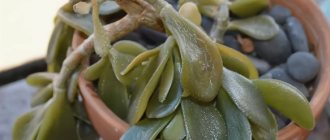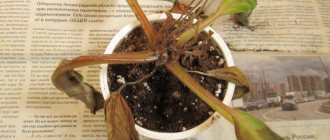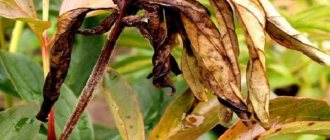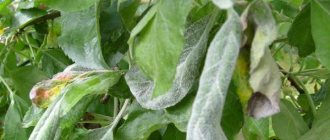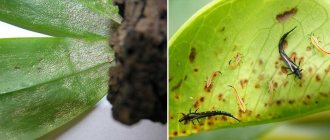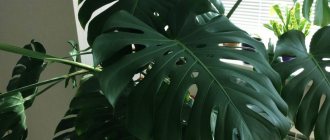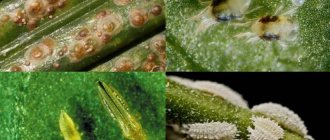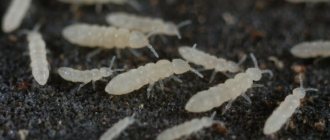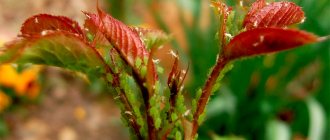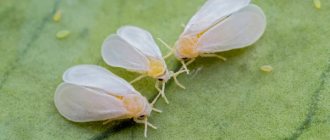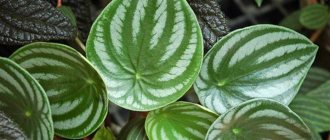Improper care
First of all, you should consider the negative factors that relate to errors in plant maintenance. It is they that in most cases lead to a deterioration in the appearance of the fat plant, falling or blackening of foliage, disproportionate growth, etc.
Yellowing and falling leaves
Very often, owners of fat cats face this problem. In this case, to eliminate the problem, it is important to adhere to the following watering rules:
- Moisten the soil only with warm water, previously filtered or settled. When watering with cold water, the difference in air and soil temperatures can adversely affect the condition of the plant.
- Avoid excessive waterlogging of the soil during the cold season. This situation leads to rotting of the roots, as well as the formation of fungus.
- Dying of leaves can be caused by drying out of the soil in summer. If its top layer becomes too hard, you should immediately water the flower.
Stretching the stem
Disproportional development of the bush often occurs due to insufficient lighting. If watering standards are observed, but there is a lack of sunlight, the fat plant stretches the stems, trying to get to the sun. As a result, there is insufficient development of leaves and branches, despite their large growth.
If the money tree is sick for this reason, just put it closer to the window. However, it is important to avoid excessive exposure to sunlight to prevent burns.
In some cases, the stems become elongated due to the normal development of the crassula. To prevent them from falling on their side, you should transplant the flower into a wide pot. Its root system grows in a horizontal plane, so transplanting it into a deeper container will not give the expected results.
soft leaves
If the foliage of the money tree has lost its elasticity and softened, then this could be caused by excessive watering, lack of lighting or inappropriate room temperature. The process of restoring the flower should be started immediately, otherwise it will soon die completely.
The plant is removed from the pot along with a lump of earth, then the soil is removed. The root system is being inspected.
Note!
If rotting or moldy areas are found, they are cut off. Next, the roots are washed under a stream of water at room temperature, the sections are treated with charcoal or activated carbon tablets crushed to powder.
All that remains is to plant the fat plant in a pot using a new substrate. For the first watering, carbendazim is used. The plant is placed in a bright place, but without direct sunlight.
There is no point in saving Crassula if rotting of the roots occurs at the base, or they are soft and dark along their entire length.
Leaves turn black
If the leaves of the money tree become covered with black spots, this is an indication of sunburn. The unhealthy area appears strictly at the point where the light ray hits and does not spread further. The blackened leaf can be removed, and care must also be taken to prevent direct sunlight from hitting the flower in the future.
However, there is another reason for the formation of black spots on the leaves of the fat plant - fungal infection. The fight against this disease consists of using the drug Fitosporin-M. It is diluted in a twice as large volume of water, after which it is thoroughly stirred and diluted again with water (the procedure will be described in more detail in the instructions for the drug). The foliage is sprayed with the resulting solution, and after a while the operation is repeated.
Lack of growth, drying out
Crassula will stop growing if its roots become crowded in the pot. You should choose a container that is slightly larger in volume. The new pot should be wider and only slightly higher, since the roots prefer to grow horizontally. It is better to transplant a flower in the spring, but if it is infected with fungus or other diseases, the procedure cannot be postponed.
A slowdown in development can also occur during winter dormancy. This is a normal phenomenon and does not require any measures to be taken.
Another reason could be a lack of nutrients in the soil or poor lighting. It is necessary to purchase complex fertilizers in a specialized store and use them in accordance with the instructions.
Important!
Drying foliage indicates an incorrect watering regime. Excessive or insufficient amounts of moisture may be added to the root. In summer, watering is carried out more often, after the top layer of soil dries, in winter - less often.
White dots on leaves
The money tree can be overly saturated with moisture received not only from the ground, but also from the air. As a result, the plant has to open spores on the leaf blades to get rid of excess water.
The appearance of white spots does not promise any particular danger, however, you should pay attention to the frequency of watering and, if possible, reduce the humidity in the room (for example, increase the temperature with a heater if we are talking about the winter period).
Reddening of foliage
A change in leaf color from green to pale or even bright red can occur for three reasons:
- prolonged exposure to direct sun;
- lack of sufficient fresh air flow;
- lack of nutrients in the soil.
Treatment will be appropriate:
- Provide the plant with shade.
- Ventilate the room regularly.
- Fertilize with nutrients. The need for this action is also indicated by wilting leaves.
Main plant diseases
Crassula, like other succulents, is equipped with a protective mechanism developed over centuries of growing in dry and hot climates. The pulp, which accumulates moisture, as well as cilia and thorns, aerial roots that collect dew drops, serve the plant to store more water.
But the succulent does not like excessive moisture, nor does it like too high or low temperatures. Often, money tree diseases are associated precisely with a violation of these indicators.
Silvery patina
A whitish coating may appear first on the stems, and then at the base of the leaves and spread to the entire leaf blade. This condition is preceded by a change in the structure of the leaves and stems - they become flat, sluggish, the trunk may bend toward the ground.
Reasons for this condition:
- Intensive watering. By over-moistening the soil, you cause rotting of the roots and all above-ground parts. Stagnant water and waterlogging of the soil are one of the reasons for the softening of leaves, shoots, and deformation of branches.
- Lack of drainage layer at the bottom of the pot. If excess water does not drain into the pan after watering, the roots rot and Fusarium rot develops.
- Spider mite infestation. These small insects leave a whitish web that looks like clumps of cotton wool. The webs are so thin that they look like silvery fluff at the base of the leaves and on their lower parts.
You can get rid of silvery plaque only after determining the reason that caused this condition of the money tree:
- fusarium rot has an unpleasant moldy odor;
- with improper care, leaves and trunks soften almost immediately, even before a whitish coating appears;
- insects that attacked the plant can be seen at the base of the petioles and on the underside of the leaves.
In case of fungal infection, fungicides are used, the solution of which is treated with the leaves of the plant, as well as, in case of severe infection, the surface of the soil and the edges of the pot. It is better to transplant the succulent into a new container using fresh substrate.
Insecticide treatment is suitable for insects. Treat each leaf in turn with a cotton swab soaked in the solution or use spraying.
In any case, all affected leaves and even shoots must be cut off so as not to lead to the death of the plant. In advanced cases, when more than 2/3 of the fat plant is affected, it is necessary to propagate using a healthy apical shoot or a lateral cutting.
Root rot
Another common disease of Crassula is root rot. The disease is caused by fungi. Main symptoms:
- the stem darkens;
- rot gradually spreads to the roots;
- the above-ground part fades;
- the leaves become discolored, “wet” brown spots and constrictions appear on them;
- growth overall is slowing;
- Over time, the leaves fall off and the stems bend to the ground.
Causes of rot:
- excessive watering;
- lack of soil disinfection before planting seeds or propagating the money tree in any other way;
- contaminated equipment or growing pots;
- low room temperature.
Fungal spores are spread with air currents, during watering, carried on hands, clothing or tools, as well as by flying pests. Therefore, the disease can simultaneously affect all the flowers in the room.
To effectively combat this problem, fungicidal drugs are used:
- Fundazol;
- Trichophyte;
- Topaz;
- Fitolavin;
- Mikosan;
- Bordeaux mixture;
- copper sulfate.
Folk remedies based on copper sulfate, chalk, wood ash, iodine, potassium permanganate, milk and laundry soap are also used.
For prevention purposes, it is necessary to choose high-quality planting material, and before replanting or primary planting, disinfect the soil and containers, as well as gardening tools. Remove dead plants immediately. It is not recommended to feed the soil too often. Watering standards must be observed.
Changes in leaf color and structure
The leaf blade of the money tree is the first to respond both to attacks by pests and diseases, and to improper care. If it softens, becomes sluggish, watery, this indicates excessive watering. It is necessary to inspect the roots, carefully remove the plant from the pot, remove damaged parts with a knife or pruning shears, and transfer to a new pot with fresh substrate.
Diseases
All Crassula diseases are a consequence of fungal or bacterial infection. Favorable conditions for their spread are dampness and cold air. Let's take a closer look at money tree diseases and their treatment with photo examples depending on the type of lesion.
Fungal diseases
Most often, infection by fungal spores occurs during cold weather, when there is increased air humidity in a poorly heated room. Wet or gray rot appears as brown spots, gradually increasing in diameter and covering the entire leaf.
The plant will need to be transplanted into fresh substrate. If the damage is abundant, healthy cuttings are rooted and the mother flower is eliminated.
To eliminate fungal spores, it is recommended to reduce the amount of watering and ventilate the room well. All affected parts of the plant are removed, and the cut areas are disinfected with activated carbon or a weak solution of potassium permanganate.
A silvery coating on the leaves of Crassula occurs after infection by fungi, namely powdery mildew. The appearance conditions are similar to those indicated above. As countermeasures, the affected areas are removed, the top layer of soil in the pot is removed and replaced with a new one. Treatment with special preparations will give faster results. They are applied liberally from a spray bottle or poured into a basin, into which the entire plant, previously freed from the earthen clod, is dipped. It would be a good idea to disinfect the pot – the inner and outer walls.
Bacterial diseases
This type of Crassula disease is almost impossible to distinguish from a fungal infection. Treatment is carried out using fungicides. The next step is to spray the bush with antibiotics with products that include penicillin or gentamicin. It is impossible to overdo the dosage, since the substances do not have a toxic effect on the plant.
If after some time there is no improvement, the fat plant must be eliminated. It is no longer possible to save the flower; instead, there is a risk of infecting other house plants.
Spider mite
Spider mites are a microscopic pest that has the ability to multiply rapidly and greatly harm the plant. A sign of its appearance is the formation of a film of thin cobwebs on the leaves and young shoots.
The affected areas of the plant initially appear as small yellow spots. Then they increase in size, close together and turn brown. The plant gradually dries out.
The pest feels favorable only in a dry room. Periodically give the money tree a gentle shower with warm water.
If signs of a mite are found, remove all affected leaves. If the plant is severely damaged, use drugs. How to treat fatty:
- Fitoverm. Dilute 1 ampoule in 2 liters of water. Carry out treatment at intervals of 7-14 days. Consumption of the finished solution is 10 liters per 10 square meters. m.
- Mites. Dilute 1 ampoule in 1 liter of warm water. Spray 3 times. Interval – 7-15 days.
- Augustine. Take a specialized preparation for indoor plants. Mix 1 container of product with 2.5 liters of water. Carry out the spraying procedure 4 times with an interval of 7-10 days.
- Akarin. Dilute 1 ampoule in 1 liter of water. Treat the wood 2 times - the second 1 month after the first.
You can resort to traditional methods of combating the parasite:
- Place dried tobacco leaves and stems to infuse in 1 liter of water. Exposure time – 24 hours. Dilute the resulting concentrate to 2 liters, strain, and spray the plant.
- Take 100 g of hot pepper, mix with 1 liter of water. Leave to infuse for 24 hours. After the time has passed, carry out the treatment 2 times with an interval of 10 days.
- Wash the plant 4 times with laundry soap. Use a soft sponge. Interval – 4 hours. After the last procedure, thoroughly rinse off any soap residue.
Pests
In addition to Crassula diseases, pests also have a negative impact, photos of which will be presented below. These include spider mites, scale insects, mealybugs and rootbugs. The method of combating each type of insect is different and therefore requires separate consideration.
Shchitovka
This pest is quite large in size, so it is clearly visible to the naked eye. Females remain motionless, they are attached to a stem or leaf, covering their body with some kind of shield. The scale insect has a light brown or brown color.
The first step in the fight against the pest is its manual removal from the surface of the fat plant. Next, treatment is carried out with a soap solution or a commercial preparation called Fitoverm. To consolidate the result, spraying is repeated after a few weeks.
Spider mite
Unlike scale insects, Crassula is practically invisible on the surface. The appearance of a tick is determined only by the corresponding sign - a silvery coating on the money tree, which is actually a very thin cobweb covering its habitat. The pest itself looks like a gray or red dot continuously moving around the plant.
Along with the cobweb, a change in the appearance of the leaf plate occurs. It becomes covered with brown spots, turns yellow and falls off over time. A simple method of eliminating the mite is to spray the crassula and then wrap the pot in a plastic bag. This will sharply raise the humidity level, and in such conditions the pest does not live long.
Soap solution or preparations Apollo, Actellik, Fitoverm are also effective in removing insects.
Mealybug
The insect quite often attacks Crassula. Its habitat is the axils of the leaves, in which the juice is sucked and plant tissue is eaten. As a result, the immunity of the fat plant weakens, accompanied by the fall of leaves. Externally, the pest’s activity manifests itself as a powdery discharge resembling cotton wool.
You can remove the insect with a stream of water. The affected areas are wiped with a cotton swab dipped in garlic infusion or alcohol solution. In advanced cases, the drugs mentioned above are used.
Root mealybug
Some manifestations of money tree diseases are caused by root worms, which are very difficult to detect. It will be possible to identify the cause of the deterioration of the flower only during the process of replanting - growths and movement of insects with a white body will be noticeable on the roots.
The pest is removed under running water at a temperature of 50 degrees. After this, the roots are treated twice in a Fufanon or Actellik solution with an interval of 7 days.
How to revive a money tree at home
Saving the fat woman is possible if you take timely measures:
- it is possible to revive a tree as long as not all of its above-ground parts and roots are affected by rot or pests;
- immediately collect all insects visible on the surface, spray or wash the leaves with soapy water;
- apply insecticides or fungicides not once, but at intervals of 1-2 weeks to prevent relapse;
- In case of severe infection, it is better not to revive the plant, but to replant it with an apical cutting or a healthy side shoot.
Do not neglect regular inspections of the fat plant, paying special attention to the underside of the leaf and petioles. This is where colonies of sap-sucking insects settle. Always inspect the root collar - this is where root rot spreads along the stem and leaves.
Causes
The vegetative organs of many plants contain red pigment. As a rule, in deciduous plants it appears in the fall, when chlorophyll, which is responsible for the green color, is destroyed.
A change in the color scheme of indoor plants also indicates changes in the biological process. The phenomenon is not always harmless and can be caused by serious reasons.
Watering
Under natural conditions, Crassula will grow in drought. Domestic varieties also require little moisture, but require proper watering.
If the leaves not only acquire a red tint, but also become wrinkled and begin to wither, this is most likely the result of the soil drying out. If overmoistened, the leaf blade becomes violet or purple in color.
Other signs of overwatering:
- soft leaves;
- trunk bending in all directions;
- sagging stems.
Lighting
In summer, the money tree is often placed on the balcony or outside. The lighting becomes more intense even when the pot is placed in partial shade. An abundance of sunlight can cause the color of the leaf plate of the Crassula to change to a red tint.
At other times of the year, flowers are often placed on windowsills on the south side. The direct action of sunlight causes the Crassula to change the green color of the foliage to red.
A change in color is often a sign of severe sunburn. The main symptoms of the condition are:
- the leaf blade becomes soft and sluggish;
- the money tree outwardly looks tired and depressed;
- the leaves remain wrinkled even in the case of moderate and regular soil moisture;
- the plate turns red around the edges, below, in the center;
- depressed dots or whitish spots appear on the leaves;
- the shade of the trunk changes.
It is worth considering that in certain types of Crassula, the above shade of the trunk and redness of the leaf blade is a feature of the variety.
Other reasons
The flower exhibits a hue reaction to being moved to a new location. This is stress for the plant. An unexpected move from a dimly lit room to a windowsill has the same effect on Crassula.
It is important to gradually accustom the money tree to a new place of residence or growing conditions.
A sharp change in temperature conditions also becomes a stressful situation for the money tree. This happens when a plant “lives” outside in the summer, and is brought indoors for the winter.
The temperature factor quickly affects the appearance of the flower. The leaves take on a red tint. But quickly enough and on its own, without the help of a grower, the fat plant returns to its normal state.
Another reason for color fluctuations is improper feeding. Too nutritious soil and excessive fertilization are not suitable for Crassula. It is optimal to comply with the following standards:
- use substrate intended for cacti;
- Balance the mineral components in the soil, since “too much” causes great harm to the plant.
In the absence of fertilizing, the leaf plate does not turn red, but in the case of excess nutrients, this phenomenon occurs often.
Root mealybug
This is a form of mealybug, but it is the more dangerous and the most difficult to control. The scale insect penetrates the roots and underground parts of the stem and sucks out the juice. The parasite does not settle on a plant alone, it appears en masse.
Signs of damage by root scale insects - the fat plant stops growing and then begins to rot. Having pulled the tree out of the ground, you can see snow-white sticky branches on the roots.
Pest control is difficult. What to do:
- Isolate the diseased money tree from other indoor plants.
- Replace the soil in the pot with new one. Before doing this, clean the roots from the fluffy cocoons in which the scale insects are located.
Why does the trunk of the fat plant rot?
The main reasons for trunk rotting from the inside are improper watering.
If you overwater the money tree, the woody part will become soft. An unpleasant rotting smell may appear. Causes:
- violation of the water regime in winter: instead of watering 1-2 times a month, for example, you water the plant every day;
- lack of drainage in the pot or unsuitable soil;
- excess moisture in the warm season, for example, due to heavy rains, if the fat plant is outdoors, or when watering every day (need 1-2 times a week);
- frequent tree replanting;
- watering with ice or any other unsuitable water;
- frequent pruning of the crown “for bonsai”;
- disease with a fungus or late blight (brown roots and other signs will tell you about this).
When the trunk rots, the entire plant suffers. The foliage becomes wrinkled and soft. The trunk not only becomes soft, but also wrinkles and then dries out. If rescue measures are not taken, the tree may die.
If the damage is severe, the softened trunk cannot be restored. You will have to cut off the top healthy part and root it. The trunk cannot be saved, but a new flower can be grown from healthy branches and leaves.
